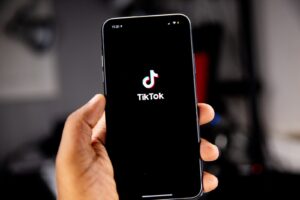 TikTok is upping the ante on ecommerce in Australia. With 8.5 million monthly users and 350,000 businesses and charities using it as a “preferred platform” for social engagement, the social media giant is aggressively seeking growth opportunities.
TikTok is upping the ante on ecommerce in Australia. With 8.5 million monthly users and 350,000 businesses and charities using it as a “preferred platform” for social engagement, the social media giant is aggressively seeking growth opportunities.
One cue – the company has started running roadshows this month in Sydney and Melbourne, offering guidance on “digital marketing, content creation, and business strategy” for businesses.
The secret to TikTok’s success has been to merge video and human computer interaction (HCI) into a single interface, driving new customer behaviours and setting higher consumer expectations. TikTok’s commerce solutions include retail-enabled videos, “turning entertainment into shoppable experiences” as the company puts it.
TikTok has also harnessed an entire generation to be its content producers, creating a place where content and commerce are inextricably connected.
As such, to the TikTok generation, it’s now a given that when they watch a video, they should be able to engage with it – and, in many cases, shop directly from it. They are even able to add items from multiple sellers into one shopping cart without leaving the app.
TikTok has set the bar for customer expectations of what a smooth, content-led commerce experience should be like. And it’s a high bar. But TikTok is not the only player driving the content commerce revolution.
While Amazon is undoubtedly an e-commerce giant, and also has a large, comprehensive body of content in its Amazon Prime Video service, these two elements are not connected in the same way as TikTok. Amazon has recognised the need to go further in its mission to connect its e-commerce offering to content, developing Amazon Anywhere, an immersive commerce experience designed for virtual worlds and other interactive digital environments.
For example, in a game or app, Amazon Anywhere allows consumers to discover and buy physical products without having to leave the user interface – directly linking content and commerce. Amazon Anywhere gives small businesses the potential to offer smoother ecommerce experiences to boost customer engagement.
Apart from Amazon Anywhere, Amazon has been experimenting with other innovative features, such as Snapchat’s Shopping Lenses, a virtual try-on function for glasses and sunglasses intended to enhance the customer’s shopping experience.
Snap, which has a similar reach in Australia as TikTok at 8 million users, is also playing its part in driving forward the content commerce space. It provides a range of AR-enabled (augmented reality) tools for retailers, having identified that globally, 92% of Gen Z shoppers want to use AR when buying clothes online. Snap claims that 60% of its Australian community interacts with AR Lenses on Snapchat daily “to express themselves creatively, have fun, and buy products from their favourite brands”.
Why retailers must link content with commerce
From the examples above, it’s clear that if Australian retailers and ecommerce operators want to drive greater conversions and increase gross merchandise value on their platforms, they must take advantage of these new behaviours that TikTok has nurtured. Retailers can also take valuable lessons from Amazon’s approach, as well as from other content commerce trailblazers like Snap that are successfully connecting content and commerce.
What’s more, as is the case with Amazon Anywhere, retailers no longer have to be restricted to specific platforms when linking content and commerce. Interactive, shoppable videos can be created and enabled on any third party site or social channel, including a retailer’s own website. In Australia, News Corp offers a shoppable video ad unit, which has been used by brands such as Moët & Chandon.
With this technology, Moët & Chandon customers were able to check out right from the video (ad unit), following their “hearts to carts” all in one place. A Kantar study found that this form of advertising drove aided and unaided brand awareness, and increased purchase intent by 10%. More than 4 out of 5 (81%) users thought the shoppable video ad made product discovery and shopping easier.
Creating a smooth journey that enables consumers to buy products at the point of inspiration is key – whether that’s through a shoppable video in the case of TikTok or an AR experience enabled through Amazon Anywhere. Interactive video and AR allows retailers to provide additional product information, show real-time pricing and availability, and most importantly, create personalised and seamless shopping experiences.
The behaviours that consumers have learned from TikTok, where they swipe, tap and scroll their way through huge volumes of content, can be leveraged by other retailers that are prepared to experiment with interactive video. By using branching videos and clickable hotspots, retailers can track in-video decisions to capture the entire customer journey in real-time in order to better understand any barriers to conversion and inform their future content.
Players like TikTok are driving and setting new norms for consumer behaviour. Australian retailers that fail to adapt and embrace these innovations will lose out on the content commerce opportunity. The smart ones will evolve by tapping into interactive video and AR to create engaging, interactive content that lets consumers effortlessly purchase at the moment of inspiration.
By Nick Morgan, CEO & Founder, Vudoo
This article was first published by Power Retail
